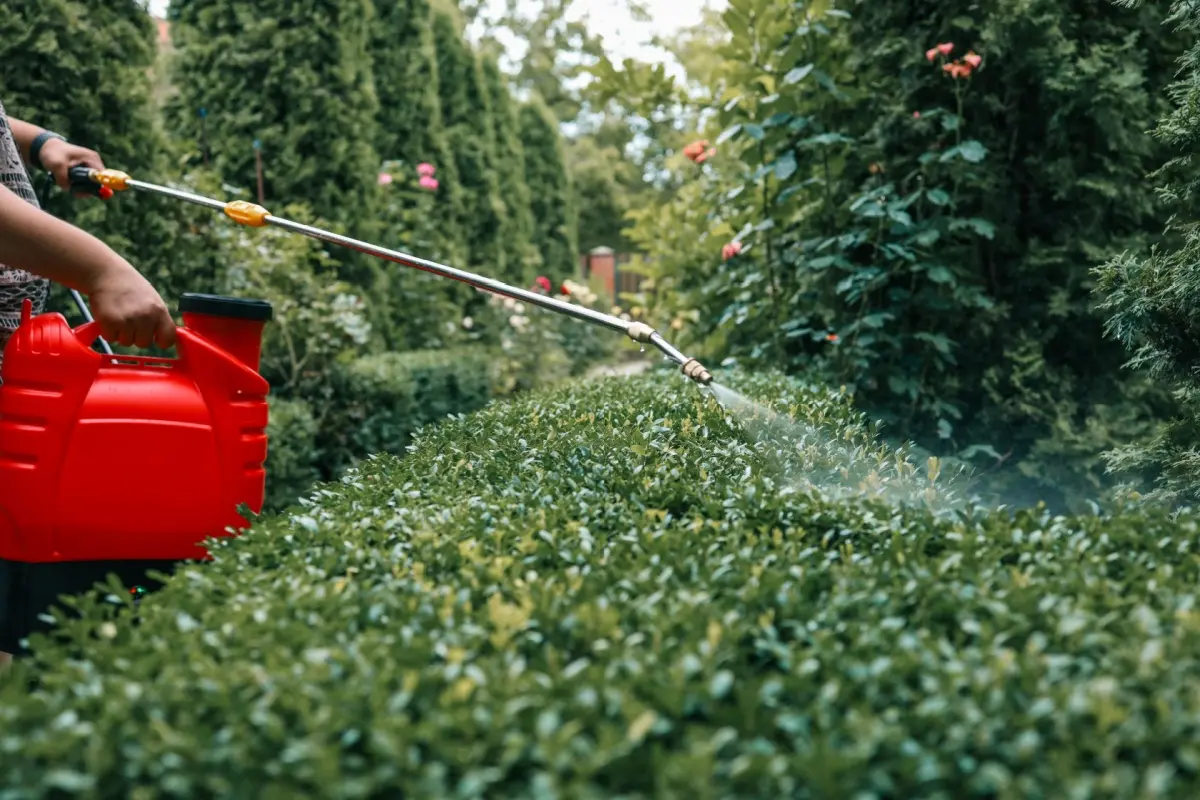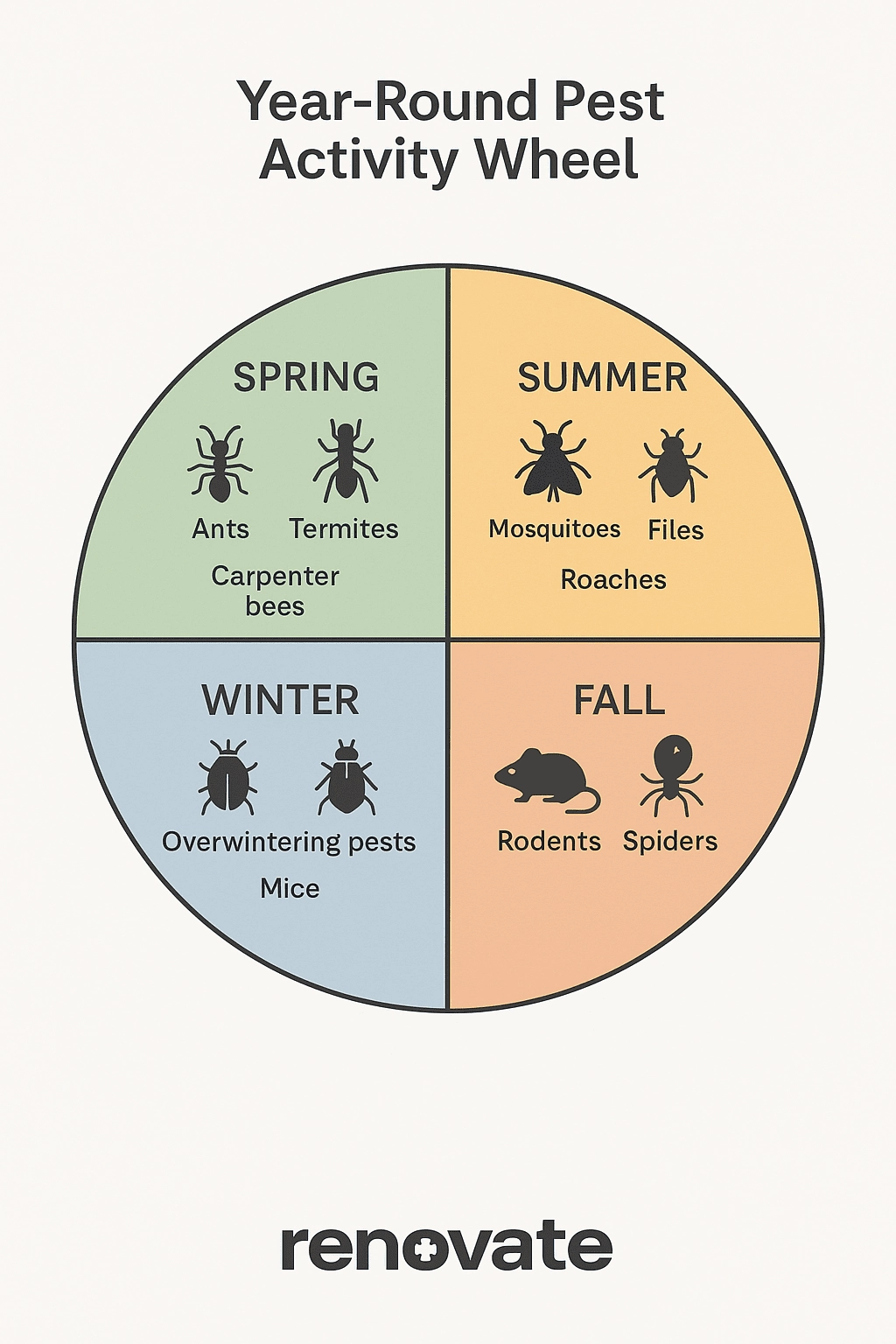If you’ve spotted unwanted critters at home, the next thought is usually about getting rid of them. So, how much does pest control cost? The answer depends on the type of infestation, the size of your home, and the treatment method. Let’s break down what you can expect to pay.
When homeowners compare prices for pest control, they’ll notice that costs shift depending on the kind of treatment and the situation at hand. A single visit to spray for ants is priced differently from an annual plan that includes inspections and follow-ups.

If an infestation is already active, the exterminator may need to use more potent chemicals or make multiple visits, which can increase the bill. The type of pest also matters: rodents, termites, and bed bugs take more time and specialized methods than routine insect treatments.
So, how much does it cost for pest control on average? Ultimately, it depends on the pest being treated and the method used. Take a look at the typical price ranges in the United States:
| Treatment | Average Price |
| General Pest Control (ants, spiders) | $100–$300 per treatment |
| Cockroach Extermination | $100–$400 per treatment |
| Rodent (mice, rats) Removal | $200–$600 per treatment |
| Termite Treatment | $800–$3,000 |
| Bed Bug Extermination | ~$1,000 |
The numbers above give you a ballpark idea, but the pricing of pest control may still shift up or down. Beyond the type of treatment, factors such as the severity of the infestation, the time of year, and even the size of your property can all influence the final bill in different ways. Here are a few examples:
A few ants in the kitchen might be solved with a single spray. A roach problem or a mouse colony often needs several visits and stronger treatments. The bigger the problem, the higher the price.
| Infestation Level | Typical Cost Range | Description |
| Small / Mild | $100–$500 | Limited to a small area with only occasional pests spotted. |
| Moderate | $300–$700 | Pests have spread to multiple rooms; frequent sightings or droppings indicate a growing issue. |
| Large / Severe | $1,000–$8,000 | Pests present in large numbers throughout the home, potentially causing structural damage or health hazards. |
Pests follow the seasons. Ants and termites show up in spring, and mosquitoes thrive in summer. Because exterminators are busier then, prices can climb. In winter, when demand slows, you may find lower rates or discounts.
| Season | Common Pest Activity |
| Spring | Ants, roaches, wasps emerge |
| Summer | Peak for mosquitoes, roaches, ants |
| Fall | Rodents move indoors, stink bugs appear |
| Winter | Rodents and cockroaches indoors |
Where you live affects what you pay. City services may cost more, while those in rural areas might incur travel fees. Areas known for termites or rodents also tend to have higher starting prices.
| Region | Common Pest Concerns | Typical Costs |
| Northeast | Rodents in cities, bed bugs, ants | $250–$40 |
| South | Termites, cockroaches, mosquitoes | $150–$350 |
| Midwest | Ants, wasps in summer; rodents winter | $150–$300 |
| West | Termites, ants, scorpions, rodents | $200–$400 |
Large homes cost more to treat because they take more time and product. Hard-to-reach areas, such as crawl spaces or attics, add to the workload. Smaller, easy-to-access houses usually cost less.
| Home Size (sq. ft.) | Typical One-Time Cost |
| 1,000 | $250–$450 |
| 1,500 | $300–$550 |
| 2,000 | $350–$600 |
| 2,500 | $400–$675 |
| 3,000 | $450–$750 |
| 3,500 | $500–$825 |
| 4,000 | $550–$900 |
If the prices for exterminators give you pause, there are options to help manage the costs:
Many pest control companies offer their own payment plans or service contracts. For example, some exterminators have quarterly service plans where you pay a flat fee each quarter or a small monthly amount. This not only breaks down the cost but also ensures that regular preventive treatments are included.
Some providers also offer bundle deals that cover several common pests under a single contract. Asking about these options can make pest control more predictable and easier to budget.
When the bill for termites or bed bugs is more than you can pay at once, financing can spread the cost out. Through Renovate, you can request pest control financing, which allows you to cover the treatment right away and repay it over time in monthly installments. This can be useful for larger, unexpected jobs, as long as you review the terms and make sure the payments fit your budget.
Some homeowners turn to credit cards to cover pest control, especially for smaller one-time jobs. This can work if you know you’ll be able to pay the balance off quickly. But interest adds up fast, and carrying debt for a service like pest removal can make the problem more expensive than it needs to be. Use this option only as a last resort.
The cost of bug exterminator visits can add up, but there are smart ways to save money while keeping pests at bay. Here are some concrete actions homeowners can take:

Minor fixes around the house can stop pests before they become a problem. Seal cracks in walls, doors, and windows to block entry points. Repair leaks and keep basements or crawl spaces dry, since damp spots create perfect conditions for insects and rodents.
Not every pest problem requires a professional. You can set simple traps for a few mice, use bait gels for a light roach problem, or treat ant trails with store-bought sprays. Just be sure to follow product instructions for safety.
Get estimates from more than one company and review what each includes. This helps you see fundamental differences in value and may reveal discounts or bundled services that lower your overall cost.
If you anticipate needing regular pest control (say, your home is in a wooded area with lots of bugs), an annual or quarterly plan could save money over time. One-time treatments can be more expensive per visit, whereas routine service plans keep pests in check and often come at a lower per-visit rate.
When asking how much pest control costs, the answer isn’t just about the price tag. It’s about what that cost saves you: avoiding structural damage from termites, preventing health issues from rodents, or simply keeping your home livable and stress-free. Thinking of it this way turns pest control from a one-time expense into an investment in your home’s future.
Below are answers to common questions about treatments, effectiveness, and planning.
Many professionals agree that bed bugs are one of the most problematic pests to eliminate. They are tiny and excellent at hiding in cracks, reproduce quickly, and have even developed resistance to some pesticides.
This combination makes them especially stubborn to eliminate. Bed bugs often require multiple intensive treatments. German cockroaches and termites are also notoriously difficult to eradicate, but bed bugs are usually considered the most challenging household pest.
Most homes do well with quarterly treatments, approximately every three months. In areas with heavier pest activity, visits every other month may be needed. If you’re dealing with an active infestation, an exterminator might begin with monthly visits, then shift to a quarterly schedule once the problem is under control.
Yes, minor problems can often be managed with cleaning, sealing entry points, and using traps or baits. These steps reduce the need for professional visits. But DIY rarely eliminates larger infestations, and pests often return if the root cause isn’t addressed.
For ongoing or severe problems, hiring a professional is usually more effective and can save money in the long run.
If hiring a professional isn’t possible, focus on managing the situation safely. Start by reducing food sources: store dry goods in sealed containers and take out trash promptly. Vacuum regularly to remove crumbs and insect eggs.
For rodents, inexpensive snap traps are more reliable than glue boards. If the issue escalates, call your local health department to ask about community programs or free guidance.
Most companies don’t bill by square foot. Instead, they set prices by the type of pest and the treatment required. The square footage of a home may be used for specific services like whole-house fumigation or termite tenting, where larger structures need more materials.
In those cases, the cost per square foot is just one part of the estimate, alongside factors like infestation level and treatment method.
Termites are often cited as the most damaging pest for homes. These silent destroyers feed on wood and can compromise a house’s structure if not detected and treated. According to the National Pest Management Association, termites alone cost Americans about $5 billion in property damage annually.
Exterminators can clear out the pests that are already in your home, but no treatment guarantees a permanent fix. Insects and rodents can return over time, especially if conditions around the house stay favorable.